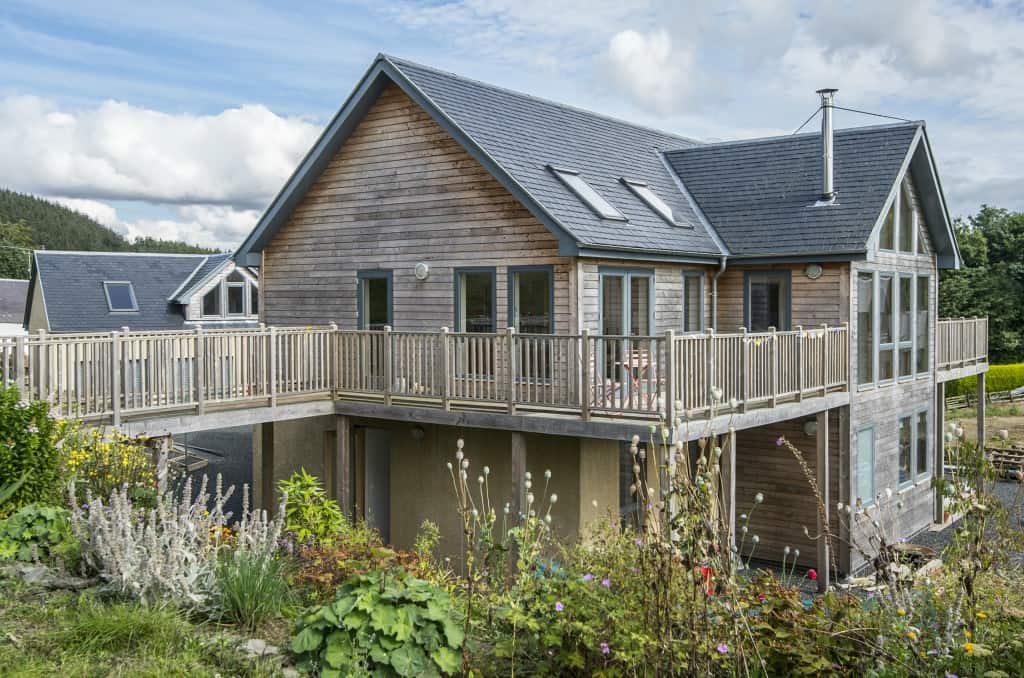Can a timber frame home stand the test of time?

One of the questions we are asked most frequently by self-builders is ‘do timber frame homes last?’ When you’re fulfilling a life-time’s ambition to build the home of your dreams it is understandable that you’d want it to stand the test of time and to be passed on to generations to come. The perception that timber frame is a relatively new building method and that it is vulnerable to a range of external factors (e.g. pests) leaves some self-builders grappling with the question of timber frame’s durability compared to other structural systems.
In reality, timber frame is a well-established building method. In Britain archaeologists have identified traces of timber-frame homes from over 10,000 years ago and it has been used widely around the world for its benefits and inherent strengths. Here are some examples that really do prove timber frame’s longevity.
Bethlehem House, built in Schwyz around 1287, is an impressive two-storey residential property constructed with timber for a well to do Swiss family. Avoiding a fire which swept through the town in 1642 razing 47 houses, Bethlehem House remains standing in excellent condition. It was continually lived in up until the 1960s and can be visited today as a museum.
Across the Atlantic the oldest known wooden structure in North America is the famous Fairbanks House in Dedham Massachusetts. It was built around 1637 for Jonathan and Grace Fairbanks and their six children. Home to eight generations of the Fairbanks family over 268 years, it is still standing and like Bethlehem house, it is now a historic museum.
Even older, but still in use as a residential property, Fyfield Hall in Essex is a timber frame home dating back to 1167-1185. With its aisled hall built from timbers felled in the twelfth century, it has recently been up for sale and is a tremendous example of an historic timber frame home.
All three of these houses have been loved, well lived in and passed down through families. The common denominator in all homes that stand the test of time is quality detailing. At its simplest, a piece of timber that exists within a stable environment free from moisture, fungal decay and infestation will last forever. If these principles are satisfied through quality design and detailing then a timber frame home will do the same.
Article Archives
- 31 January Get Started with your Self-Build Design
- 11 October Making self-build more straightforward
- 13 March NSBRC Building Systems Workshop
- 03 March Self-Build Pre Planning Advice
- 07 December External Wall Build Ups Explained
- 19 October NaCSBA’s Custom and Self Build Conference
- 22 September Our Saltire Scholar 2022
- 21 September Planning permission explained
- 23 August Fundraising for Marie Curie
- 17 August Carbon Capture and Storage
- 15 March The Case for Project Management
- 03 February Financing your self-build with a mortgage
- 15 October Custom Build Collaboration for West Cumbria
- 17 March Tackling timber frame terminology
- 06 October Exhibitors and experts line up at the NSBRC
- 26 March Tips for working from home
- 16 November Top Tips When Planning Your Build
- 25 September Is timber frame the same as a pre-fab?
- 09 April Boost Your Self-Build Knowledge
- 08 February Can a timber frame home stand the test of time?
- 15 January Self-build mortgages: what you need to know
- 23 February Cut on-site costs with FIT pre-insulated panels
- 03 January Bespoke self-build checklist
- 07 November Custom build vs self-build
- 07 April The three timber frame build routes
- 10 August A Scottish model for an English market
- 18 September 3 essentials for self-build success

